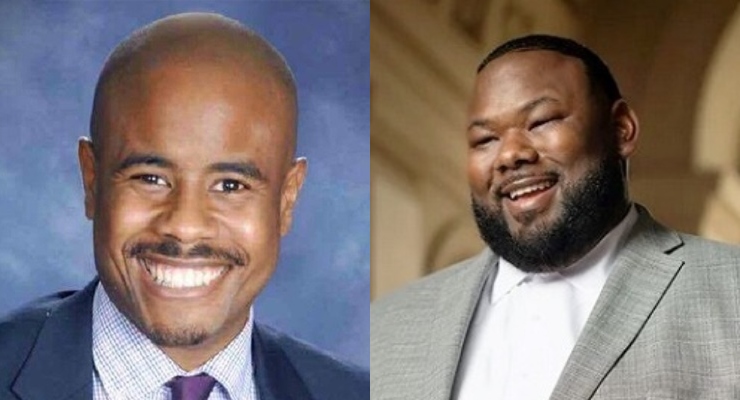The true ownership of “Adam’’ and “Eve” paintings dated 1530 literally hangs in the balance as a trial date has now been set, after a series of court rulings spanning nine years, to determine if Pasadena’s Norton Simon Museum or the sole surviving heir of a Dutch-Jewish art dealer can claim them.
The trial has been much-anticipated, akin to the litigation surrounding Egon Schiele’s “Portrait of Wally” against the Austrian Leopold Museum that was settled in 2010. Observers want to witness how the public and private interests are balanced and what the fair and just solutions are in this case, the Center for Art Law reported.
In the case of Von Saher v. Norton Simon Museum of Art at Pasadena el al, slated for a Sept. 20 trial date, Marei von Saher, the surviving sole heir of Jacques Goudstikker, claims that the paintings by Lucas Cranach the Elder should be turned over to her because Nazi invaders looted them in 1940 from her father-in-law.
Goudstikker purchased “Adam” and “Eve” from the Soviet Union itself, at a 1931 auction, making them a part of his more than 1,200 collection prior to World War II.
The paintings fell into the hands of the Nazis when Goudstikker fled the Netherlands after the 1940 German invasion, winding up in the possession of Nazi leader Hermann Göring.
Adam and Eve, which compose a diptych, were created in 1530 and were most recently appraised in 2006 for $24 million together.
Following the World War II, Allied forces returned the works to the Dutch government. Goudstikker’s widow, Desi, did not trust that she would be treated fairly by the government and opted not to negotiate for their return.
Dutch authorities transferred the paintings to George Stroganoff-Scherbatoff, who alleged in 1961 that the Soviet government had seized Adam and Eve from his family in the 1920s. The paintings were auctioned with permission from the Soviet authorities, and Goudstikker was the highest bidder at that 1931 auction.
In 1971, Stroganoff-Scherbatoff sold the paintings to Norton Simon, founder of the Norton Simon Museum of Art. The museum argues that returning the artworks to private hands when there are legal grounds for it keeping them is contrary to its desire to keep works of art available for public view.
Von Saher claims that when her mother-in-law, Jacques Goustikker’s wife Desi, went to claim the paintings, the Netherlands effectively in the 1950s slammed the legal door in her face, but she never gave up the right to bring a claim against authorities for the painting.
In its defense, the museum counters that Desi Goudstikker had a chance to lay claim to the paintings with the Dutch government and failed to do so.
Von Saher’s case was filed in May 2007 in the Federal Court for the Central District of California, making a path all the way to the U.S. Supreme Court, where the nation’s highest court in January 2015 refused to review a legal ruling.
(According to media sources Von Saher learned in 2000 that the museum owned the pieces.)
The action was the Pasadena museum’s attempt to appeal a lower court ruling, ending Von Saher’s claim. In keeping with custom, the high court gave no reason for denial.
The 9th Circuit Court of Appeals opinion in June 2015 held that U.S. Courts should accept two international accords as a statement of U.S. foreign policy.
The two accords are the Washington Principals of 1998 and the Terezin Declaration of 2007 – international resolutions that have transformed how several European governments and some American museums and collectors handle claims to Nazi-looted art.
Under the 1998 Washington Conference on Holocaust-Era Art Assets Principles, to which the U.S. is a signatory, efforts should be made for fair and just solutions for the return of Nazi-looted art.
As of now governments signing the documents can no longer throw up legal roadblocks to otherwise legitimate claims for the return of Nazi-confiscated art. The principles don’t say that claims to all Nazi-looted art must be satisfied by handing over disputed artworks, but that there must be a fair and just resolution in cases where heirs have legitimate claims.
The Norton Simon Museum had argued that Von Saher’s claim should be dismissed because it contradicted U.S. policies dated from the mid-1940s that set up a process for considering claims to art that U.S forces had recovered from the Nazis.
Moreover, the first defense for Norton Simon Museum was that Von Saher was time-barred from bringing the suit because the statute of limitations expired decades ago.
On April 2, 2015, the U.S. District Court for the Central District of California denied the museum’s motion to dismiss and found that under California law, the clock is reset each time allegedly stolen property changes hands.
Von Saher’s claim was timely: legislation passed by California in 2010 greatly relaxed the usual statute of limitations.
The Los Angeles Times reported that experts on art law foresee a possible nationwide ripple effect for at least some claims to art looted by the Nazis.
The trial has been set for September 20, 2016.














 0 comments
0 comments


